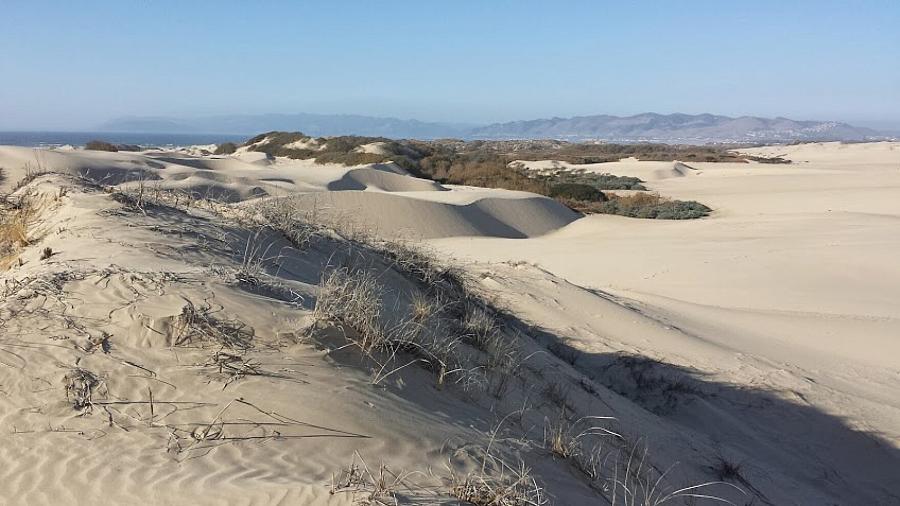Poor air quality and a lack of medical access: An imperfect storm in San Luis Obispo County

(Photo by Randol White/KCBX News)
Oceano Dunes State Vehicular Recreation Area in South San Luis Obispo County is the only California State Park where vehicles are still driven on the beach — for now.
The California Coastal Commission voted last year to phase out Off-Highway Vehicles (OHVs) at the park by 2024 as part of an effort to protect coastal habitat and improve air quality.
This has not been met without backlash, however, as off-roading enthusiasts have filed several lawsuits to challenge the decision. OHVs are a strong draw for the local tourism and business economy.
But a number of studies suggest that blowing dust, exacerbated by OHV use, at the Oceano Dunes contributes to poor air quality and negatively impacts public health in the surrounding low-income areas of Oceano and the Nipomo Mesa. Those areas often experience some of the worst air quality in the county, frequently sending residents indoors.
At the same time, California is seeing an ongoing physician shortage, with not enough new physicians and many looking to retire. The Central Coast is no exception and it’s expected to be one of the regions hit hardest in the next decade.
Are local communities taking hits to their health from bad air quality and a lack of medical care to treat the problems they face?
My project for the 2022 California Fellowship will use available datasets to explore whether the number of medical providers is an issue in the adjacent cities of Oceano and Nipomo, what the effects of that are, and what possible solutions exist.
Are there barriers to health access in the area? What are the biggest reasons for fewer health care providers? Is there a higher cost of living, a lower base pay than the state average, or low medical reimbursement rates that influence care availability?
What issues exist in the medical school pipeline that create less incentives for medical providers to practice in this community and similar ones?
Communities in Oceano and the Nipomo Mesa are largely low-income and Hispanic. Many are agricultural workers who are disproportionately exposed to poor air conditions.
Are these particular groups of people seeing more negative health impacts attributable to poor air quality and what are the issues, if any, that are contributing to that disparity?
A program is offered through the local Air Pollution Control District to help low-income residents purify the air in their homes. How far reaching is this program? Is it accessible and available for everyone who needs it?
What are policy makers and health officials doing, or not doing, to mitigate, treat and prevent chronic health effects among Oceano and Nipomo residents?
Some recent research is stirring controversy by suggesting that OHVs do not contribute as heavily to the poor air quality as other research shows.
My reporting will seek to highlight the pitfalls of this new research and understand the impact it is having on the legal battle to keep OHV use on the Oceano Dunes. And what would the cascading health impacts be if OHV use is allowed to continue?
My goal is to highlight any systemic inequities exacerbating health issues for vulnerable communities in the areas of Oceano and Nipomo. I also plan to explore and breakdown the factors limiting health care access in the area.
I want to hold systems and officials accountable for the roles they play in the public health of entire communities here on the Central Coast.
